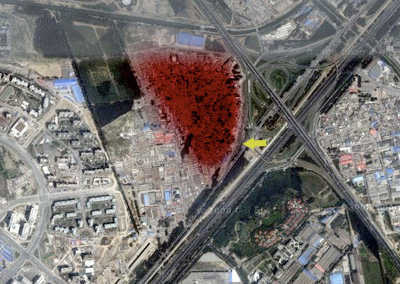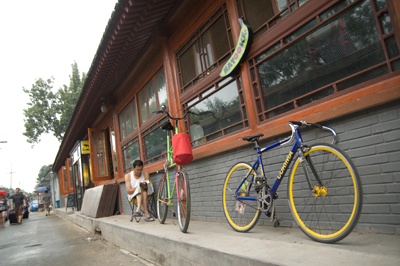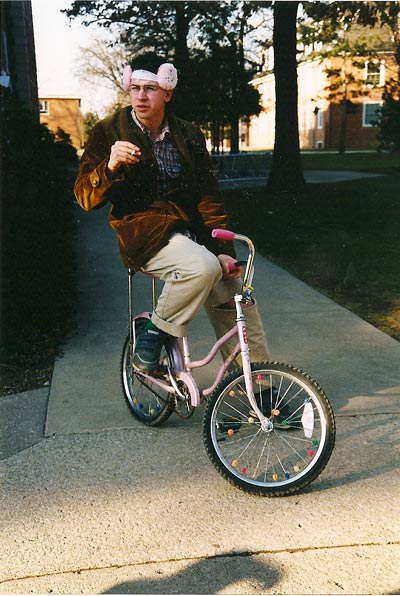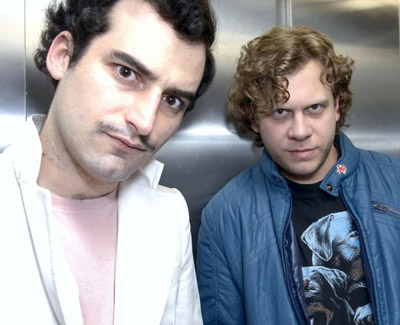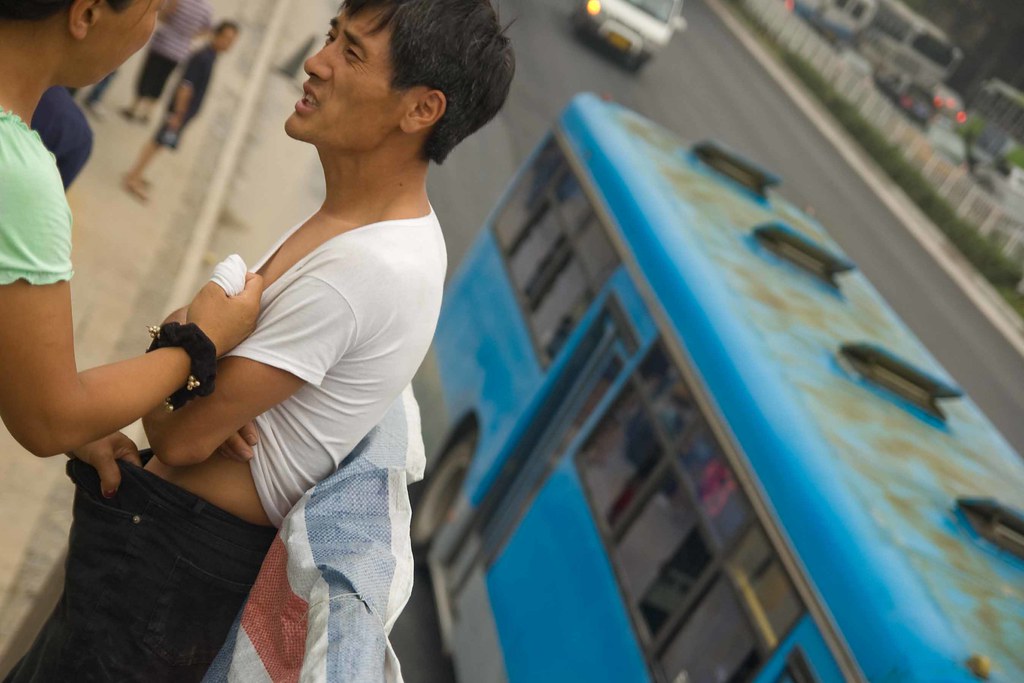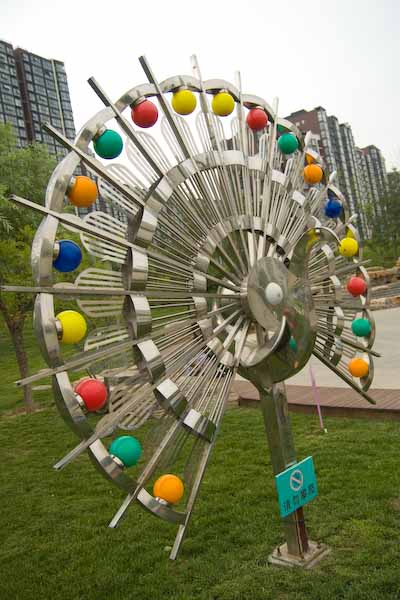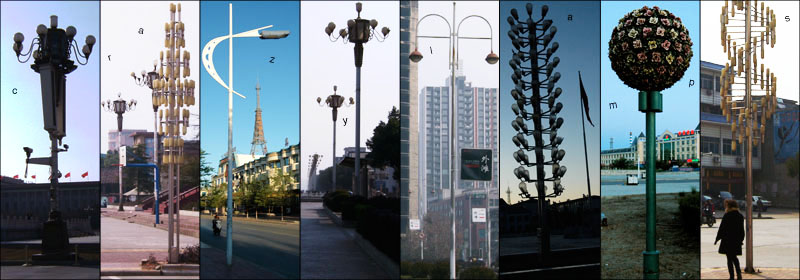The arts scene that Beijing presents to the world, and to itself, is that which you'll encounter in the streets of
798, an old munitions factory complex turned gallery quarter in the northeast corner of the city. Beginning in the late 90's, 798 attracted the artistically minded with its expansive east-German designed factory halls and cheap rents. Over a relatively brief span of time, various high-profile artists and galleries endorsed the area with their names and effectively turned it into the headquarters of Chinese contemporary art. And it grew. And it grew.
At present, 798 remains the most frequented art district in Beijing, although it is often denigrated as little more than a fashion strip with some pictures hanging on the walls. To be sure, it has, over the last several years, become more of a see-and-be-seen locale, and a striking number of galleries are bush league, at best. However, with galleries like the Ullens Contemporary, Paris-Beijing Photography, Continua and a few others, 798 maintains at least a base level of art scene integrity.
Just down the road from 798, about 1km, is Caochangdi. Formerly a village community outside of the Beijing urbanity, Caochangdi is, today, effectively within the city's sprawling arms (here is a good NY Times
article on the district). The venerable and very visible Ai Wei Wei, one of China's most vocal contemporary artists, made a flagrant move to this area in the early-2000's. His move, at first deemed crazy, gradually precipitated into a small collection of galleries and working artists, and soon enough, a broader community developed. At present, Caochangdi hosts more than 20 galleries and numerous artists' studios. Pekin Fine Arts, Three Shadows Photography, Urs-Meile, and Platform China are a few of the better spaces. Undoubtedly, the area is starting to fill with imitators, however, at present, Caochangdi maintains a very local, quiet atmosphere that its older sibling, 798, will never re-gain.
But really, this post is not about 798 or Caochangdi. If you want more, there is plenty of info to be found, in English, in a simple search.
One of my broader aspirations, during my time in China, is to gain an understanding of Chinese contemporary artists and environment in which they operate. And while 798 and Caochangdi house the exhibition spaces for many contemporary artists, they don't serve as working spaces for the majority. As with other art spaces around the world, economics is a driving force. Artists tend to infest areas, bring attention to them, start a process of gentrification, then move out when prices start to rise and the area loses its "authenticity.". In Beijing, this pattern has given rise to a number of periphery art communities, mainly in the northeast of the city, which are able to provide working spaces to both domestic and international artists at reasonable prices. These areas are, for lack of better terminology, "artist ghettos." The communities are gated and each studio is distinctly segregated from the next. The first thoughts that popped into my head when thinking about these communities centered on isolation, control and censorship. I think that these are logical ideas to entertain in a country like China, however, upon further consideration, I have discarded my Big Brother conspiracy theories.
While China, as well as the Western world, has a long tradition of artists seeking refuge outside of urbanity and living reclusively in nature, this doesn't seem to fit as the impetus for the contemporary situation in Beijing. Certainly, many artists do consider the quieter atmosphere a significant perk, but, in the end, it boils down to economics. Beijing's East Village of the early 90's (this
article contains some info), a home to a number of artists who are now in China's contemporary canon, was, in-part, a product of the high rents in the more central areas. Beijing is laid out in a system of rings, with the old imperial palace, the Forbidden City, standing as the center of the city. With this concentric system, the heart has always held a special value, and value has been, and still is, given in accordance with proximity to this heart. It is not an infallible indicator of wealth, and there are many exceptions, but it does provide a rule of thumb.
Studios existing on the fringes of the city offer not only lower prices, but also, since they aren't elements of a multi-story building, they allow for a greater amount of natural light through larger windows and translucent ceilings. The studios vary in size and price, but a ballpark figure would put a 100 square meter space at 1800 CNY per month (180 Euros). However, most, if not all, spaces are unfinished and require renovation. Putting in walls and fitting the space with the necessities would cost an estimated 40,000 CNY (4,000 Euros). That's a formidable cost for even the wealthier of aspiring artists. It makes me wonder about the economics of being an artist in present-day China. It is common to see expensive cars and SUVs in these artist communites, so perhaps they are mainly used as work-spaces for the wealthy. If so, my economic theory needs a little re-thinking.
In any case, one recent voyage into the outskirts brought me to the Beijing International Art Camp. It seems to be fairly representative of the qualities I've seen in other arts communities, so I will post some pictures here as an example.
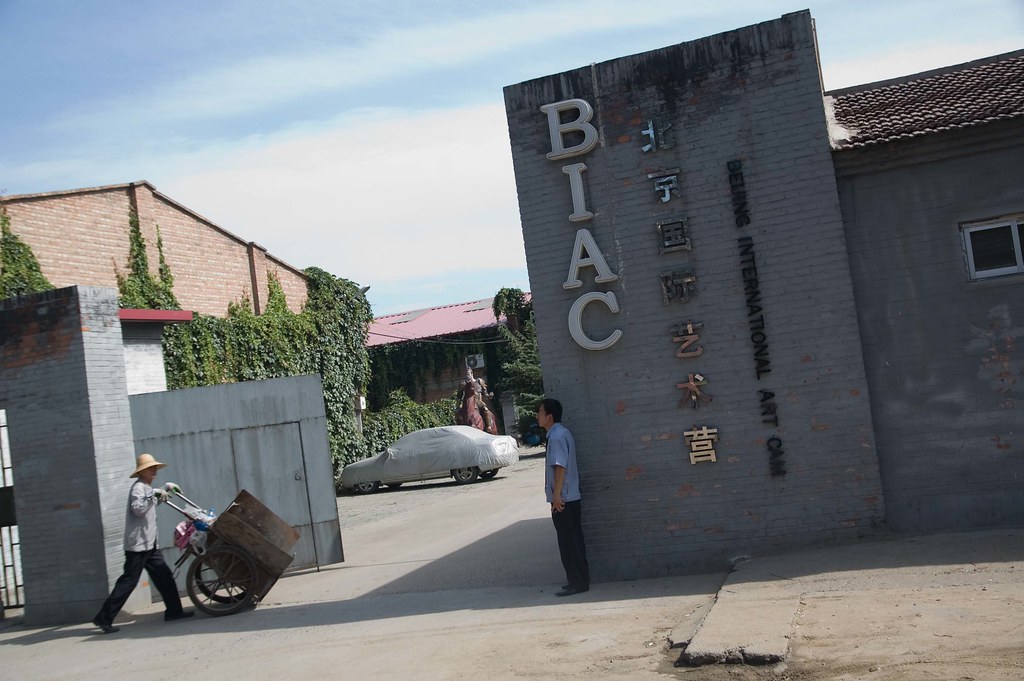
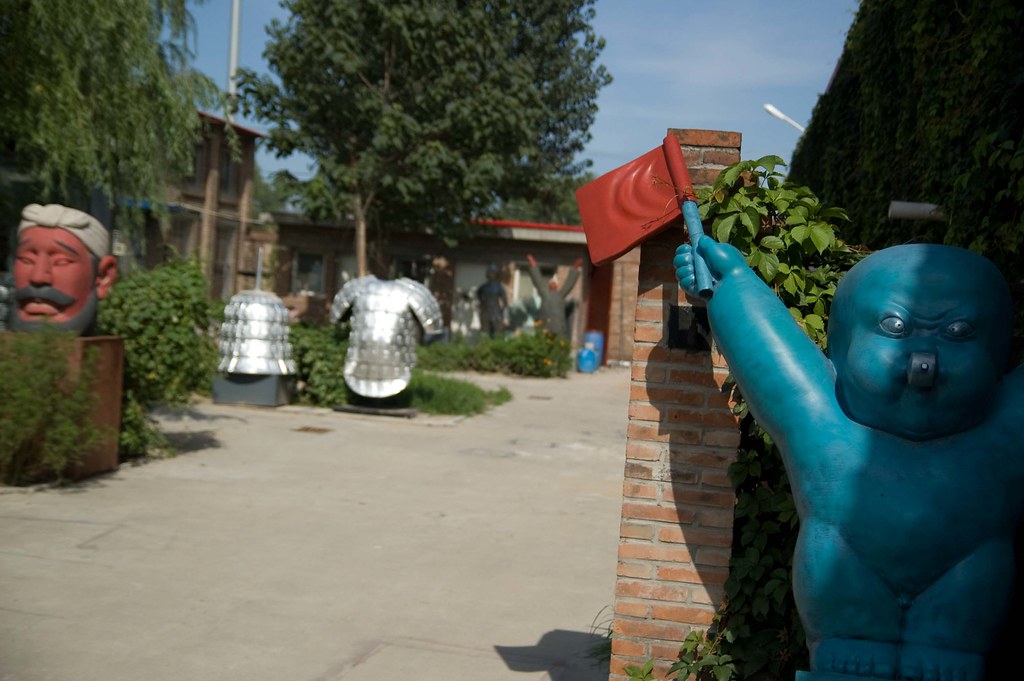
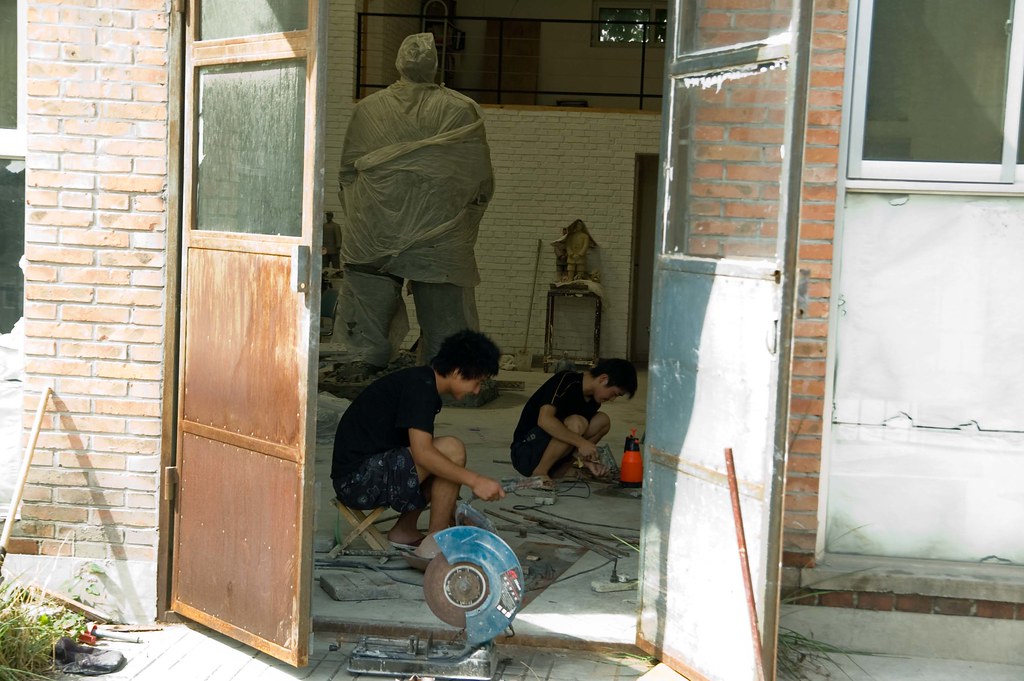
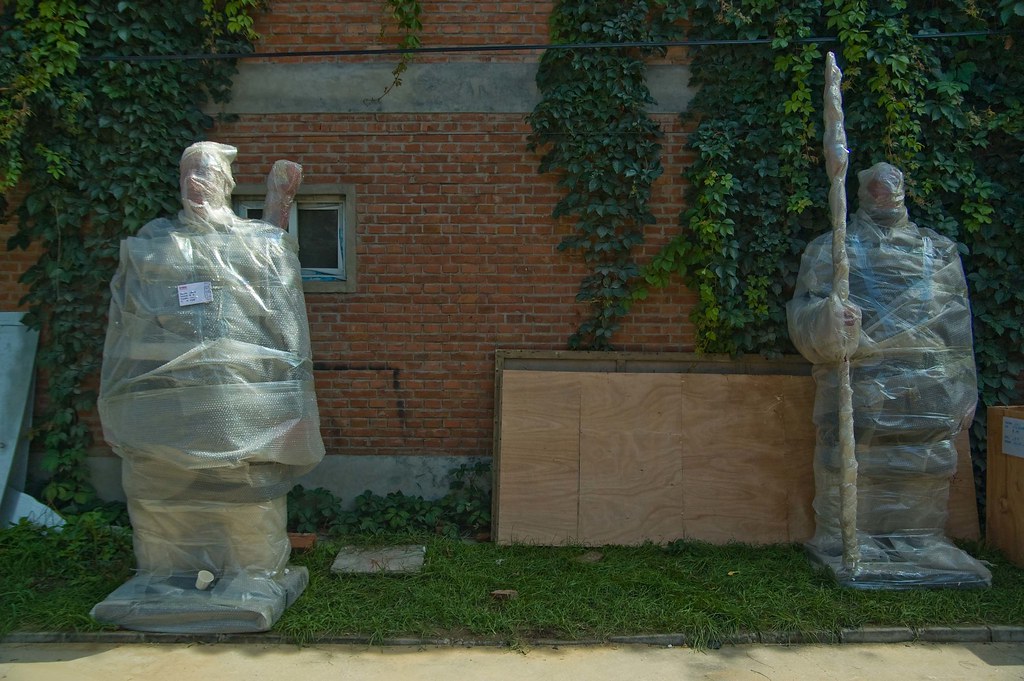
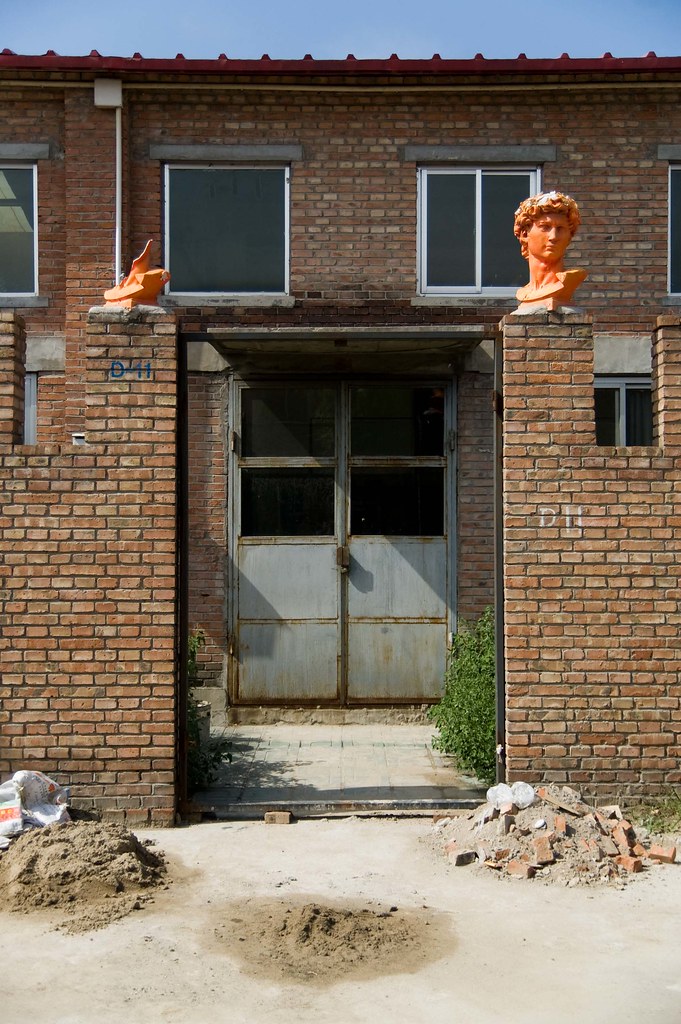
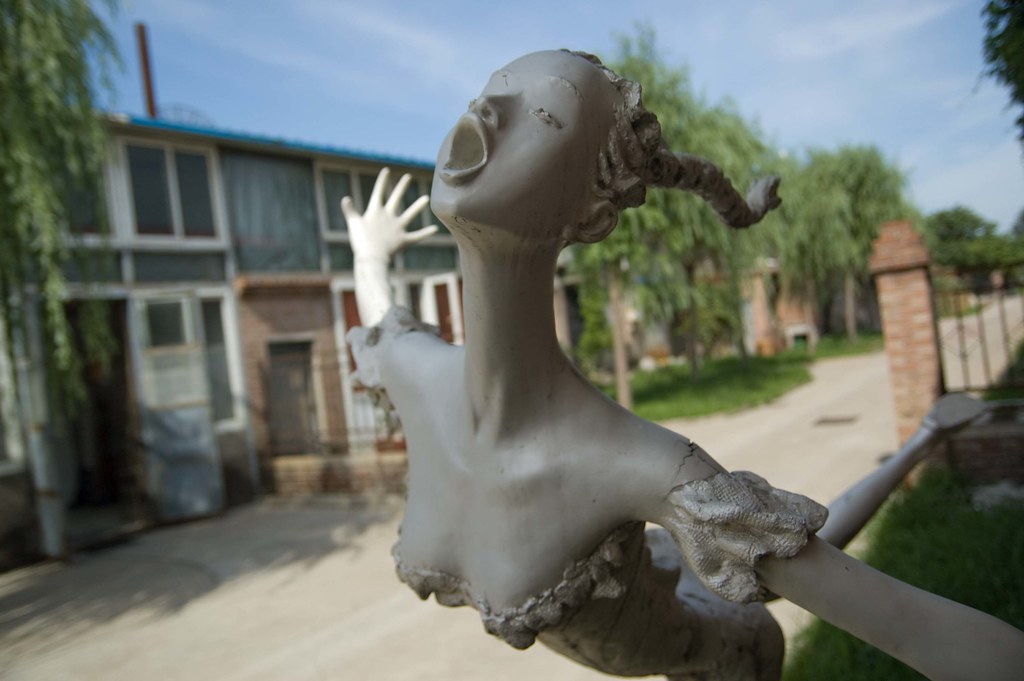

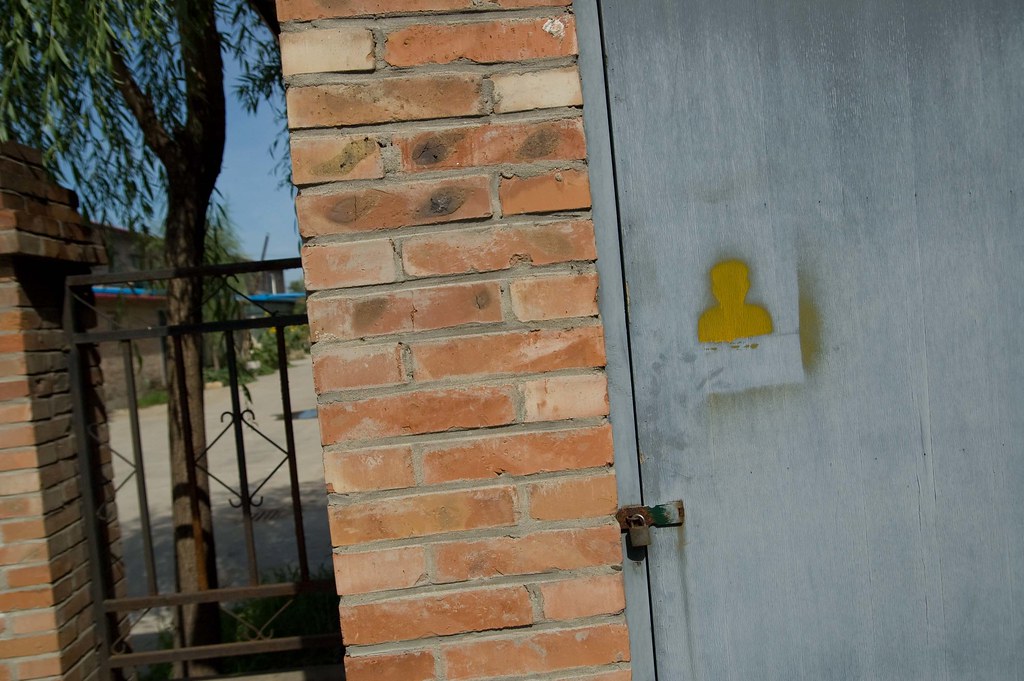
 Questions to be answered
Questions to be answered:
Are there artists working, in communities or alone, outside of these "ghetto" areas?
How many of the artists living/working in these areas are commercially successful?
Is wealth a pre-requisite for becoming an artist in China?
